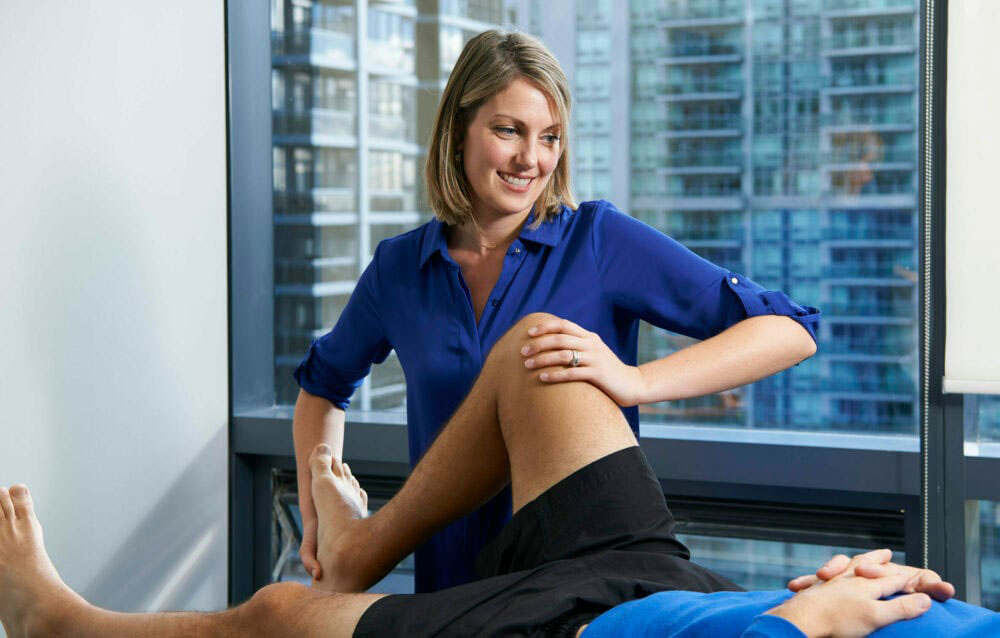Rehabilitation after sports injuries
Not all sports injuries require surgery. However, to prevent further damage, targeted interventions are needed to relieve pain, strengthen the injured area, and help return to competition.
According to the National Institute of Arthritis and Musculoskeletal and Skin Diseases, treatment of more serious sports injuries may require rehabilitative physical therapy or the use of braces, casts, or splints
A physical therapist can make a plan to restore the range of motion and strength in the injured area. This includes targeted exercise, massage therapy, hydrotherapy, ultrasound, or cold therapy to strengthen muscles and joints and prevent further damage.

Pain relief
Some pain should be relieved with prescription drugs or surgery, while other types of pain may benefit from physical therapy or exercise. Acute pain usually has a known cause and occurs suddenly. However, it often improves with time, treatment, and healing. Chronic pain, on the other hand, lasts longer than 3 months and is usually caused by injury, illness, inflammation, treatment, or sometimes unknown causes. Opioids and other strong drugs are often recommended for pain management.
But recently, the Centers for Disease Control and Prevention (CDCT) has proposed physical therapy as an effective pain management option to replace opioids.
Examples of physiotherapy techniques used to relieve acute and chronic pain include exercise therapy, stretching, electrical stimulation, ultrasound, taping, cold therapy, and massage.
Neurological disease support
Physical therapy techniques can help support symptoms caused by neurological disorders such as stroke, multiple sclerosis, Parkinson’s disease, and problems related to spinal cord injury.
A 2017 review found that 4 weeks of walking training or 8 weeks of balance training may have beneficial effects lasting 3–12 months after completion of a physical therapy session.
More specifically, researchers found that falls were reduced for up to 12 months after exercise and walking performance and gait were improved for up to 6 months.
Physical therapists also help manage symptoms in people with multiple sclerosis. According to the National Multiple Sclerosis Association, physical therapy can help with common symptoms such as balance, weakness, coordination, spasticity and flexibility, aerobic endurance, fatigue, and respiratory function. According to Johns Hopkins Medicine, in-hospital physical therapy programs can help with stroke rehabilitation and spinal cord injury management before discharge.

Reduces symptoms associated with arthritis
Rheumatoid arthritis and osteoarthritis can cause severe joint irritation, pain, tenderness, oedema, and rigidity. Physical therapy helps improve these conditions.
The Arthritis Foundation states that physical therapy can help keep fitness levels, increase general strength to support joints and better mobility and recovery from the use of affected joints.
Reduce complications associated with pelvic floor dysfunction
A lot of strain is put on your pelvic floor muscles during pregnancy and childbirth. This also applies to menopause, abdominal surgery, and other conditions that can alter intra-abdominal pressure or pelvic floor muscle tone.
If the damage is severe, the pelvic floor muscles weaken and lose their ability to fully support the pelvic organs, leading to urine leakage, back pain, sexual dysfunction, pelvic pressure, and prolapse.
Pelvic floor dysfunction can interfere with daily life. Good news! Pelvic floor physical therapy (PFPT) can help. A 2019 study found that PFPT for addressing pelvic floor dysfunction has definite benefits as the initial therapy for the majority of pelvic floor disorders.
For quality physical therapy in Texas, visit Texas Specialty Clinics. Call us now.
